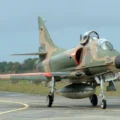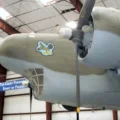
| Pays | Usa |
| Rôle | Bombardier léger |
| Premier vol | 28 juin 1954 |
| Nombre construit | 294 |
Galerie de photos d’un Douglas WB-66 Destroyer, The Douglas B-66 Destroyer was a U.S. Air Force Tactical Air Command light bomber based on the United States Navy’a-3 Skywarrior avion d’attaque lourd basé sur un porte-avions. Il était destiné à remplacer le Douglas A-26 Invader. Une version de photo-reconnaissance RB-66 a été commandée simultanément. Le B-66 de l’USAF a conservé l’équipage de trois hommes de l’US Navy A-3, mais a incorporé des sièges éjectables qui manquaient à la variante de l’US Navy. WB-66D: Electronic weather reconnaissance variant with the crew compartment modified for two observers, 36 built with two later modified to X-21A.
Source: Douglas WB-66 Destroyer sur Wiki
| Douglas WB-66 Destroyer | |
|---|---|
| Photographe | Vladimir Yakubov |
| Localisation | Musée de l’air de Pima, Tuscon |
| Photos | 167 |
| RB-66C Destroyer Walk Around | |
|---|---|
| Photographe | Fotios Rouch |
| Localisation | Inconnu |
| Photos | 21 |
Voir aussi :
Lla Douglas WB-66 Destroyer was a modified version of the B-66 Destroyer, a jet-powered light bomber and reconnaissance aircraft developed by the Douglas Aircraft Company for the United States Air Force in the 1950s. The WB-66 was designed to perform weather reconnaissance missions, using advanced radar and meteorological equipment to collect data on atmospheric conditions and weather phenomena. The WB-66 had a crew of five: pilot, co-pilot, navigator, radar operator and weather observer. The WB-66 was equipped with a large radome under the fuselage, housing an AN/APS-54 weather radar, and a tail-mounted AN/APS-33 search radar.
Lla WB-66 also carried various cameras, sensors and probes to measure temperature, humidity, pressure and wind speed. The WB-66 had a range of about 2,400 miles (3,900 km) and a maximum speed of 630 mph (1,020 km/h). The WB-66 entered service in 1956 and was deployed to various locations around the world, including Europe, Asia and the Pacific. The WB-66 played an important role in gathering meteorological information for military operations and scientific research. The WB-66 was retired from service in 1972, after being replaced by newer and more capable aircraft.
Vues : 3305




















